The Witch Head Nebula: A Celestial Formation in Orion
The Witch Head Nebula, officially known as IC 2118, is a fascinating cosmic structure located in the constellation Orion, approximately 1,000 light-years from Earth. Positioned near the bright blue supergiant star Rigel, this nebula has earned its distinctive name due to its resemblance to a profile often likened to a mythical figure. Its striking blue color is primarily a result of Rigel’s intense light reflecting off dust particles within the nebula. Additionally, the unique properties of these dust particles enhance the blue reflection effect, making the nebula stand out vividly against the cosmic backdrop.
As a reflection nebula, the Witch Head Nebula does not generate its own light but instead reflects illumination from surrounding celestial bodies. Its composition consists mainly of interstellar dust and gas, remnants of past stellar activity, which contribute to ongoing cosmic processes such as star formation. Over millions of years, interactions involving stellar winds, radiation, and gravitational forces have shaped the nebula’s distinctive form.
Astronomers study the Witch Head Nebula not only for its striking appearance but also to gain insights into the life cycle of interstellar material. Observing its structure and composition helps scientists understand star formation and the evolution of galaxies. While challenging to spot with the naked eye, amateur astronomers can view the nebula using telescopes in dark sky conditions. High-resolution astrophotography has further revealed intricate details of this cosmic formation, enhancing its appeal among space enthusiasts. The Witch Head Nebula exemplifies the vast and intriguing phenomena present in the universe, inspiring scientific curiosity and artistic imagination alike.
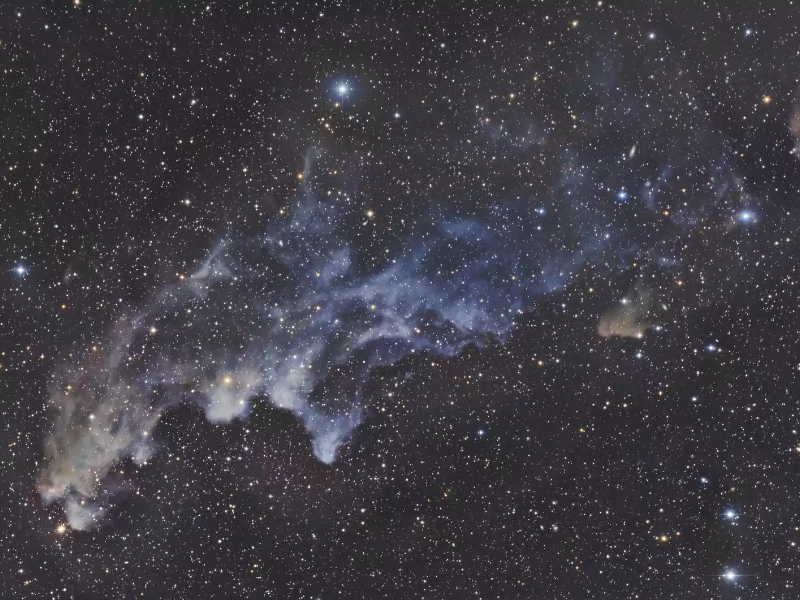
Badlands Guardian: A Natural Landform in Alberta
The Badlands Guardian is a remarkable geological formation located in southeastern Alberta, Canada. This landform, discovered via satellite imagery in 2006, exhibits an appearance reminiscent of a human head adorned with what resembles a traditional headdress. Measuring approximately 700 by 800 feet, this feature is a striking example of pareidolia, a phenomenon where the human mind perceives familiar patterns in natural landscapes.
Formed over thousands of years through natural erosion and weathering, the Badlands Guardian is composed of soft clay-rich soil shaped by wind and water. The illusion of a face is created by the interaction of hills, valleys, and a roadway that unintentionally contributes to the impression of a headgear-like structure. The geological history of this region dates back to the Late Cretaceous Period, around 75 million years ago, when it was a subtropical environment. Gradual shifts in climate and terrain led to the erosion of sedimentary layers, creating the characteristic landscape of the Alberta Badlands.
The discovery of this landform highlights the role of modern technology, such as satellite imaging, in uncovering previously unnoticed natural features. This advancement allows scientists and the public alike to appreciate the intricate patterns formed by geological processes. Although the Badlands Guardian is not easily accessible due to its remote location, it continues to intrigue geologists, geographers, and nature enthusiasts. Its existence underscores the dynamic nature of Earth’s surface and the ongoing evolution of landscapes shaped by environmental forces over time.
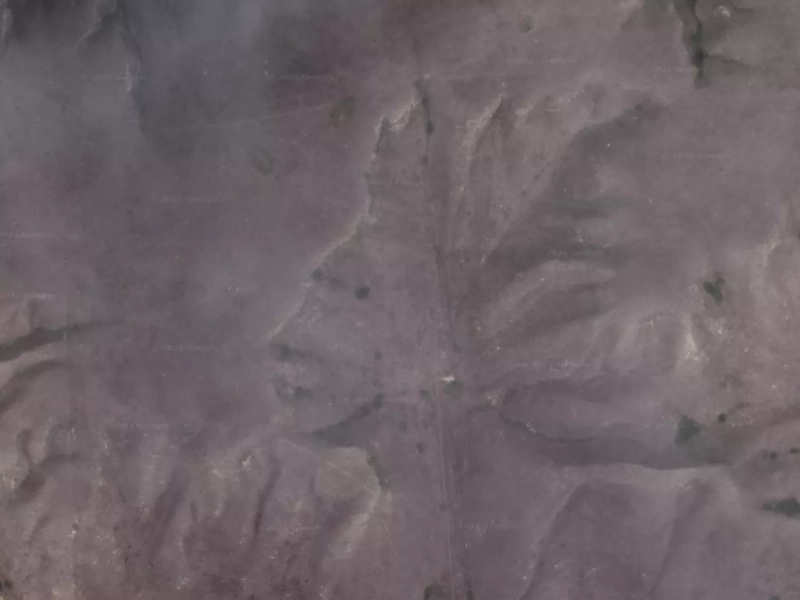
Dracula Orchid: A Unique Botanical Adaptation
The Dracula orchid, a genus of more than 100 species native to Mexico, Central America, and northern South America, is a fascinating example of nature’s intricate designs. Despite its name, which translates to “little dragon,” the orchid is most notable for its resemblance to facial structures, particularly those of primates. This striking visual similarity is an example of natural adaptation and plays a role in the plant’s survival.
The distinct appearance of Dracula orchids is believed to aid in pollination by attracting specific insects. Certain species exhibit patterns that resemble features such as eyes and mouths, drawing in pollinators that associate these cues with their natural food sources. The interaction between the orchid and its pollinators highlights the complex relationships within ecosystems. Among the most recognized species are Dracula simia, which exhibits a face-like formation, and Dracula vampira, which has a darker, more pronounced structure.
These orchids thrive in the cool, moist cloud forests of elevated tropical regions, typically between 300 and 2,000 meters above sea level. Due to their sensitivity to environmental changes, habitat conservation is essential for their continued existence. Cultivating Dracula orchids outside their natural habitat is possible but requires careful replication of their native conditions, making them a challenge for horticulturists.
Scientific studies of the Dracula genus contribute to understanding plant evolution, adaptation strategies, and ecological interactions. Their distinct appearance continues to captivate botanists and plant enthusiasts, serving as a reminder of the remarkable biodiversity found in nature and the importance of preserving delicate ecosystems.
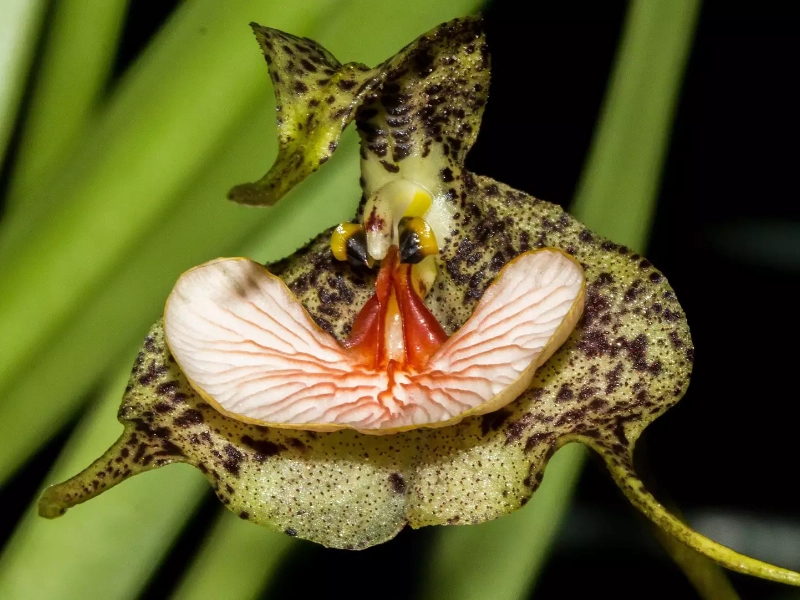
Ebihens Overseer: A Coastal Rock Formation
Located in the Ébihens Islands off the coast of northwestern France, the natural rock formation known as the “Overseer of Ébihens” has drawn attention for its resemblance to a human face. This effect is an example of pareidolia, a phenomenon where random patterns in nature are perceived as recognizable shapes. Depending on the viewing angle and lighting, the rock’s contours create the illusion of facial features, including eyes, a nose, and lips, with vegetation on the summit resembling hair.
This formation is primarily composed of granite, a durable igneous rock shaped over millennia by wind, rain, and sea erosion. The interplay between these natural forces has sculpted the rock into its present form. Coastal vegetation, adapted to the harsh marine environment, has taken root in its crevices, further enhancing its appearance.
While the visual impression of a face varies with perspective, the formation remains a notable example of how geological processes interact with human perception. The site attracts geologists, nature enthusiasts, and visitors interested in natural landscapes. As environmental conditions continue to influence coastal areas, preserving such geological features remains important for both scientific study and appreciation of natural aesthetics.
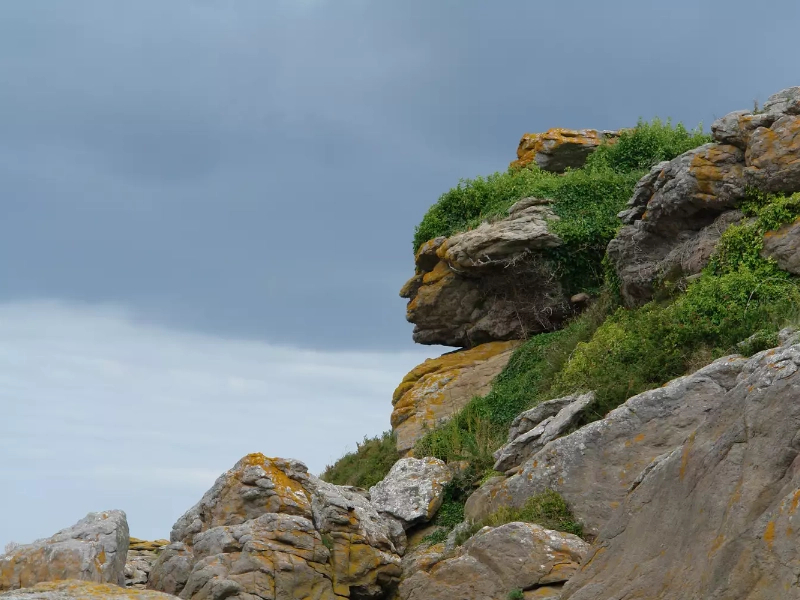
The Face on Mars: A Visual Phenomenon
The “Face on Mars” is a well-known geological feature in the Cydonia region of Mars, first photographed by NASA’s Viking 1 mission in 1976. The initial low-resolution image showed a plateau-like structure that appeared to resemble a human face due to the effects of light and shadow. This resemblance led to widespread speculation and popular interest.
The appearance of facial features in the image was an example of pareidolia, the tendency to perceive patterns where none exist. As later missions provided higher-resolution images, including data from the Mars Global Surveyor in 1998 and the Mars Reconnaissance Orbiter in 2001, it became evident that the formation was a naturally occurring landform shaped by erosion and other planetary geological processes.
Scientific analysis has determined that the “Face on Mars” is a result of natural topography, with shadows and surface variations contributing to the illusion seen in the original image. This case highlights the importance of continued exploration and advancements in imaging technology to improve our understanding of planetary surfaces.
Beyond its scientific significance, the Face on Mars serves as an example of how human perception can influence interpretations of extraterrestrial imagery. The phenomenon has contributed to discussions about space exploration and the need for careful analysis of observational data. As technology progresses, future missions will provide even greater clarity on Mars’ geological history, further expanding our knowledge of the planet and its natural features.
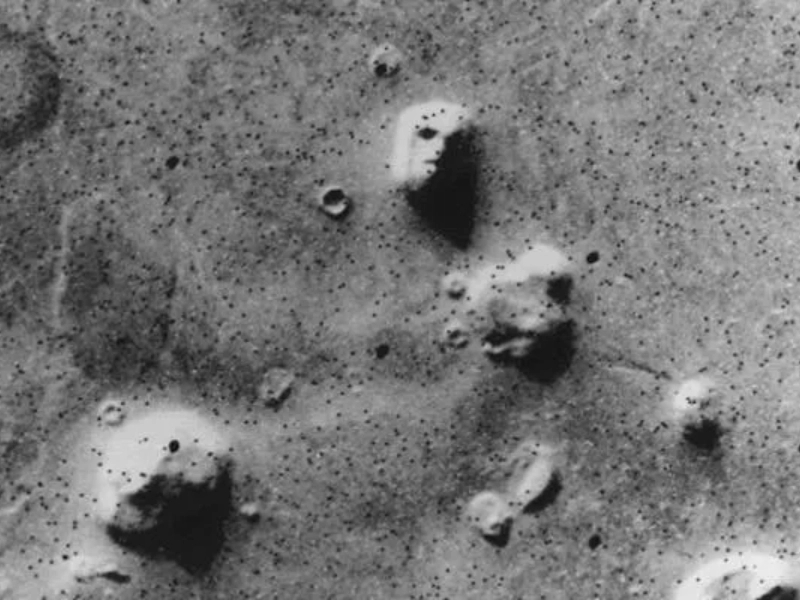
Queen’s Head: Taiwan’s Geological Wonder
One of Taiwan’s iconic natural landmarks is the “Queen’s Head,” located in Yehliu Geopark in New Taipei City. Situated along the mile-long Yehliu Cape, this unique rock formation has been shaped by the forces of nature over thousands of years to resemble the profile of a queen. Many visitors find its profile reminiscent of Queen Elizabeth I of England. The formation of the Queen’s Head is a result of geological processes where harder rock layers protect softer ones, allowing distinctive hoodoo-like structures to develop over time. The Yehliu Peninsula, primarily composed of sedimentary rocks like sandstone and mudstone, has witnessed erosion by wind and waves, leaving behind the resilient formation. Queen’s Head is not only a geological marvel but also a symbol of Taiwan’s natural beauty, attracting millions of tourists every year. Due to its increasing vulnerability, experts are closely monitoring the structure as it shows signs of erosion, particularly at the narrow neck. Efforts to protect it involve limiting access and using advanced technology to track structural changes. This preservation raises awareness about the importance of sustainable tourism and conservation of natural sites. Queen’s Head has also become deeply embedded in Taiwanese culture, appearing in art, literature, and tourism campaigns, and continues to be an important subject for scientific research on coastal erosion.
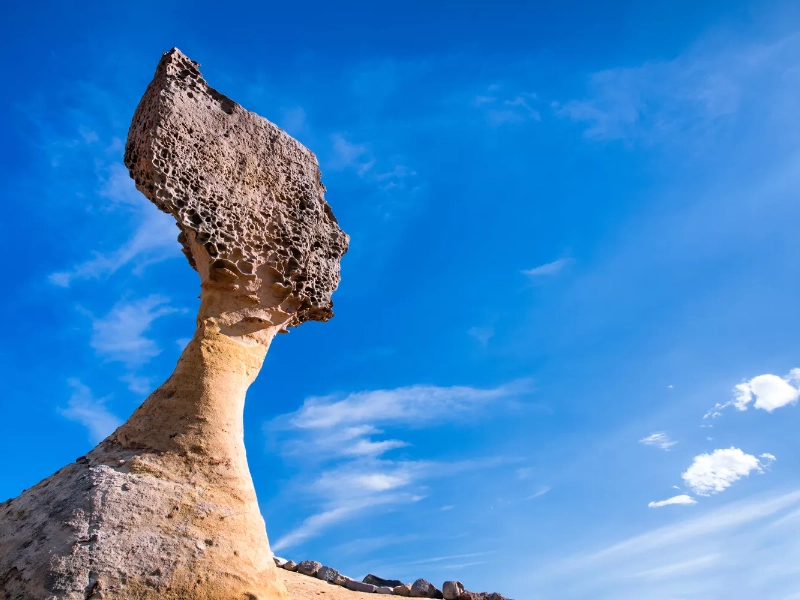
Happy Face Spider: Nature’s Cheerful Spider
The Hawaiian Happy Face Spider, scientifically known as Theridion grallator, is a unique species endemic to Hawaii’s highland rainforests. Measuring only a few millimeters in length, this tiny spider is famous for its distinct smile-like pattern on its abdomen, which varies in color and design. The Happy Face Spider’s appearance serves as a defense mechanism, possibly confusing predators, especially birds, with its range of colors. The “happy face” pattern develops as the spider matures, a fascinating aspect that draws interest from researchers studying genetics and environmental factors. This spider has become a cultural symbol in Hawaii, appearing in art and even on postage stamps. However, habitat destruction and invasive species threaten its existence. Conservation efforts are focused on preserving native forests, benefiting not only the Happy Face Spider but also other endemic species. The spider’s intricate web-building habits and its ecological role in controlling insect populations underscore the importance of maintaining balanced ecosystems. Ongoing studies are shedding light on the spider’s survival strategies, ensuring its place in Hawaii’s unique biodiversity.
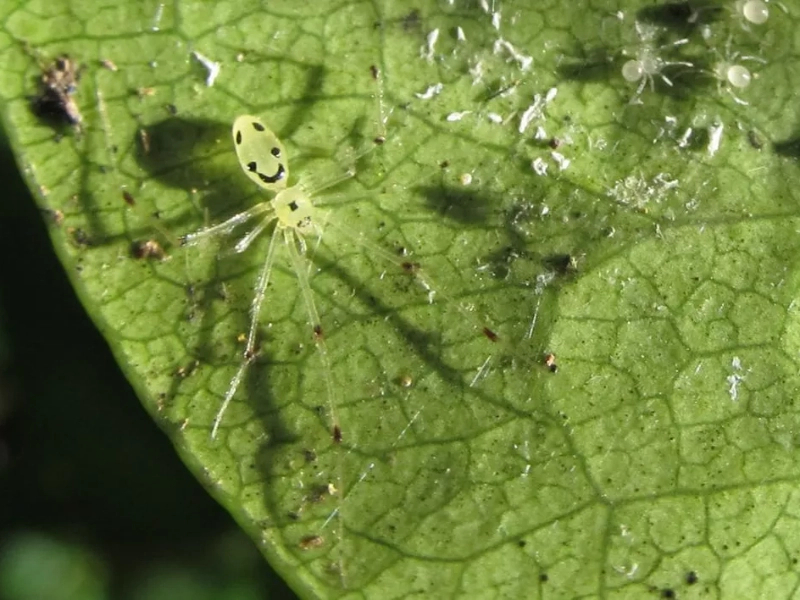
Pedra da Gávea: A Sculptural Illusion in Rio de Janeiro
Pedra da Gávea, a towering 2,700-foot granite peak in Rio de Janeiro’s Tijuca Forest, is a natural wonder that has intrigued locals and visitors for centuries. The most striking feature of the mountain is its face-like appearance, which has sparked legends and speculation over the years. However, geologists explain that the “face” is the result of natural erosion caused by wind, rain, and temperature fluctuations. The mountain’s weathered profile offers a perfect example of pareidolia, where the human brain identifies patterns in random objects. Pedra da Gávea is an important landmark for hikers and climbers, offering breathtaking views of Rio’s landscape. It also holds significant ecological value, influencing local weather and providing a habitat for various plant and animal species. Conservation efforts are vital to protect the area from further erosion and to preserve the unique ecosystem that surrounds it.
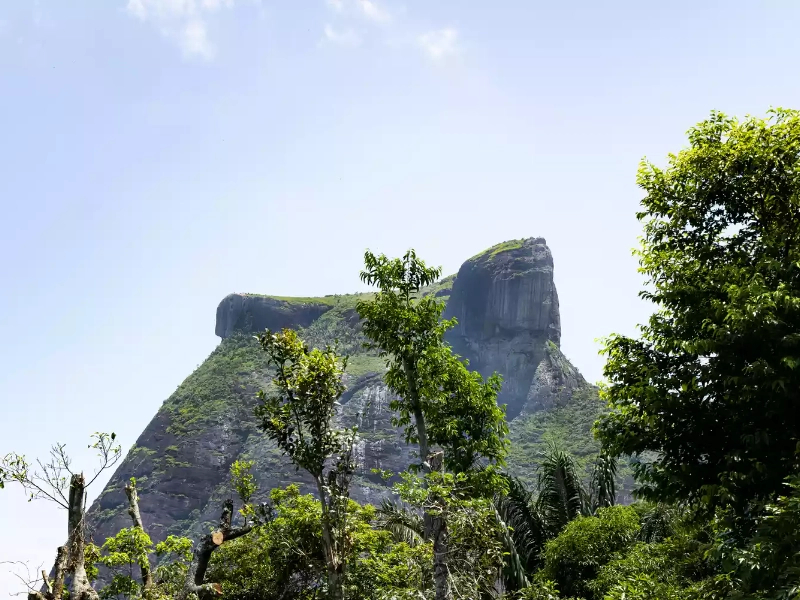
Spiny Spiders: Nature’s Skull-Faced Creatures
The spiny orb spider (Gasteracantha cancriformis) is a fascinating species found across the southern United States and parts of Central America. Known for its skull-like pattern on its abdomen, this spider uses its intimidating appearance as a defense mechanism to deter predators. While its appearance might suggest danger, the spiny orb spider is harmless to humans. These spiders are essential in regulating insect populations, particularly pests, which benefits the environment by maintaining ecological balance. The spider’s web-building abilities are also noteworthy, as they create intricate structures that are both functional and visually striking. Despite its seemingly fearsome look, the spiny orb spider plays a crucial role in maintaining healthy ecosystems. Conservation efforts focus on protecting these spiders and their habitats, ensuring the continuation of their beneficial ecological role.
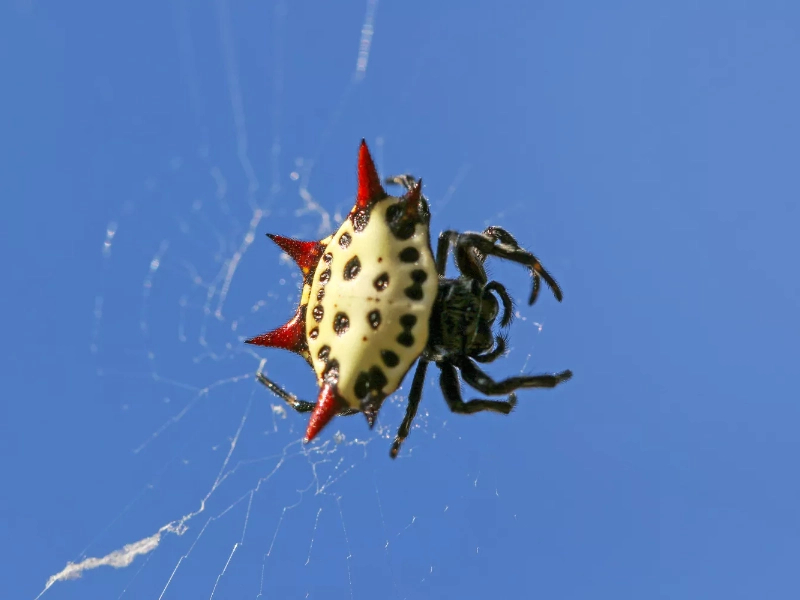
Hoburgsgubben: Guardians of Sweden’s Ancient Sea Rocks
Hoburgsgubben, located on Gotland, Sweden, is a remarkable limestone sea stack formed by thousands of years of coastal erosion. This natural sculpture, which resembles the face of an ancient figure, has captivated locals and tourists alike. The stack was shaped by the relentless forces of wind and water, leaving behind a durable rock pillar with a striking facial profile. Hoburgsgubben not only serves as a cultural symbol for the people of Gotland but also plays a critical role in the local ecosystem, influencing weather patterns and providing a habitat for diverse plant and animal species. Its geological and ecological significance highlights the need for conservation efforts to protect both the formation and the surrounding environment. Research into coastal erosion and the effects of climate change on sea stacks like Hoburgsgubben is vital for understanding the future of these natural monuments.
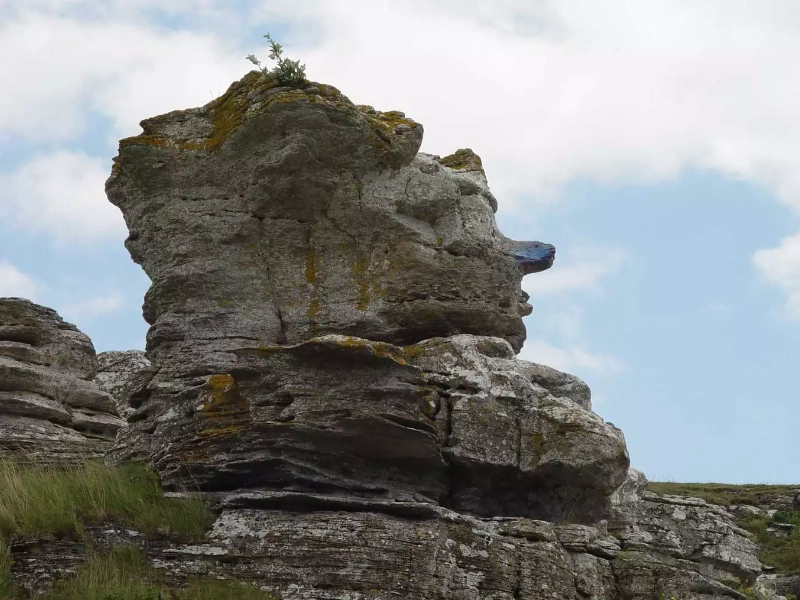
Horsehead Nebula: A Cosmic Horse Among the Stars
The Horsehead Nebula (Barnard 33), located 1,500 light-years away in the Orion constellation, is one of the most iconic features in the night sky. Known for its horse-shaped silhouette, the nebula is a dark cloud of gas and dust, set against a backdrop of glowing light from nearby stars. As part of the Orion Molecular Cloud Complex, the Horsehead Nebula is a region of active star formation, where gas and dust collapse under gravity to create new stars. The nebula’s structure provides astronomers with valuable insights into the processes of star birth and the composition of interstellar matter. It has also captured the imagination of many, appearing in books, movies, and popular media, fueling public interest in astronomy. The nebula’s unique shape and significance make it a subject of ongoing research, contributing to our understanding of the universe’s mysteries.

Autry Lava Columns: Geological Wonders of Devil’s Hole
Located in the rugged terrain of Devil’s Hole, Washington, the Autry Lava Columns have captured the curiosity of visitors and scientists alike. These remarkable structures, resembling two figures engaged in conversation, offer an intriguing glimpse into Earth’s fiery past and the ongoing power of geological processes. The columns are a prime example of pareidolia, where the human mind recognizes familiar patterns in random shapes. Their likeness to animated characters is purely coincidental, formed by natural forces over millions of years.
The formation of the Autry Lava Columns dates back to the Miocene epoch, over 15 million years ago, when volcanic activity in the Pacific Northwest led to the creation of the Columbia River Basalts, the world’s largest flood basalt region. Lava flows from this period covered vast stretches of Washington, Oregon, and Idaho, eventually solidifying into layers of basalt. Over time, tectonic movements caused these layers to tilt, while differential erosion sculpted the columns into their current shape.
While the columns’ anthropomorphic appearance adds to their charm, it also illustrates how humans often see meaning in the natural world. This phenomenon, prevalent in art, mythology, and science, reflects our desire to find familiar forms in nature.
Geologically, the Autry Lava Columns provide valuable insights into the volcanic history of the Pacific Northwest. By studying their composition and structure, geologists can better understand the nature and extent of Miocene lava flows. These columns offer a unique opportunity to explore how basalt interacts with various geological forces, such as erosion and tectonic activity.
Additionally, the site holds ecological significance. The basaltic landscape around Devil’s Hole has created distinct habitats for various plant and animal species, many of which have adapted to this unique environment. This interplay between geology and ecology provides fertile ground for interdisciplinary research, linking earth sciences with life sciences.
The Autry Lava Columns not only serve as a natural wonder but also offer educational opportunities. By engaging visitors in the geological processes that shaped the area, they foster a greater appreciation for the natural world and its dynamic changes over time. Protecting such geological features is crucial for both scientific research and public education, ensuring their preservation for future generations.
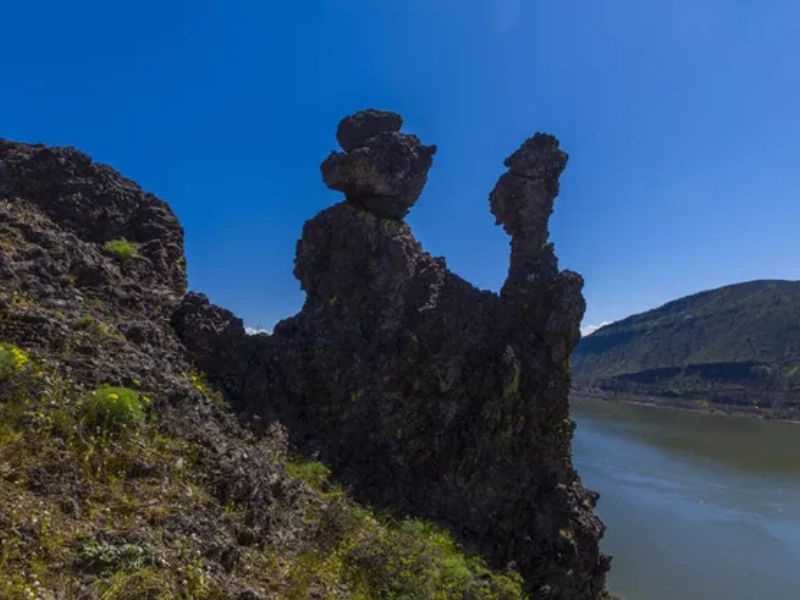
Solar Jack-o’-Lantern Face: A Cosmic Halloween Surprise
NASA’s Solar Dynamics Observatory (SDO) recently captured an image of the Sun that resembles a Jack-o’-Lantern face, a coincidence that blends cosmic activity with advanced imaging technology. Although barely visible to the naked eye, this photograph offers a unique perspective on the Sun’s magnetic activity. Once released, it quickly caught the public’s attention, sparking interest in solar physics and space research.
The Jack-o’-Lantern appearance is not permanent but rather a temporary result of solar activity. The glowing eyes, nose, and mouth seen in the image correspond to areas on the Sun’s surface where magnetic fields are particularly active, causing them to emit more light and energy. These active regions are typically associated with solar phenomena such as sunspots, solar flares, and coronal mass ejections, which can affect space weather and communication systems on Earth.
To create this striking image, NASA used composite imagery, blending multiple ultraviolet wavelengths to highlight regions of high activity. This technique not only produces visually captivating photographs but also offers valuable data for solar physicists. By observing these active areas, researchers can study the Sun’s 11-year activity cycle and improve predictions of space weather events, which can have significant effects on satellite systems and power grids.
Beyond its aesthetic appeal, the photograph serves as a reminder of the Sun’s dynamic nature. As humanity’s closest star, the Sun remains an essential subject of scientific inquiry. Images like these contribute to our understanding of solar physics and enhance our ability to protect our technology from the potentially harmful effects of solar storms.
The public’s fascination with such images highlights the importance of engaging people in scientific research. By presenting complex concepts in an accessible and visually appealing manner, agencies like NASA inspire curiosity about space science and encourage future generations to pursue careers in these fields.
In conclusion, the Solar Jack-o’-Lantern face is a beautiful and coincidental reminder of the ever-changing nature of our Sun. As we continue to explore and learn more about solar activity, these images bring us closer to understanding the mysteries of our star and the broader universe. Each discovery and photograph brings us a step closer to unlocking the secrets of solar physics, offering new insights into the dynamic forces that shape our solar system.
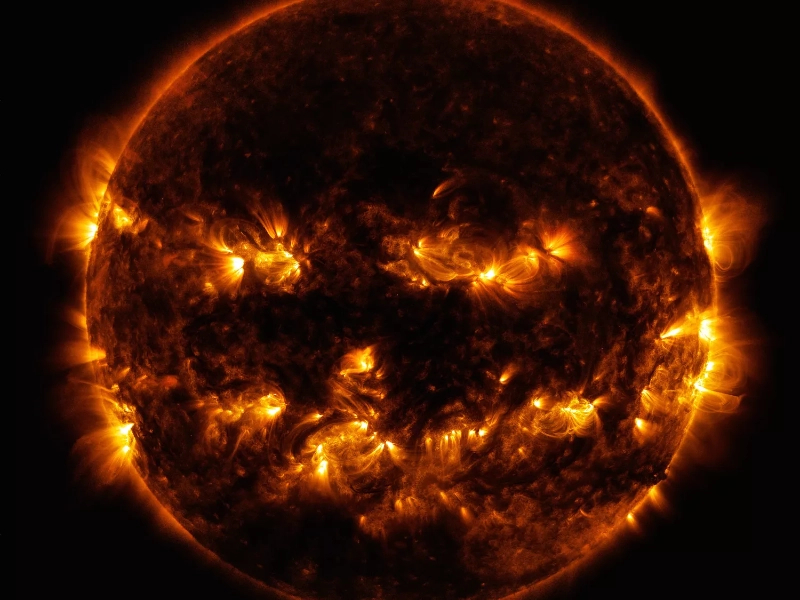
Leave a Reply